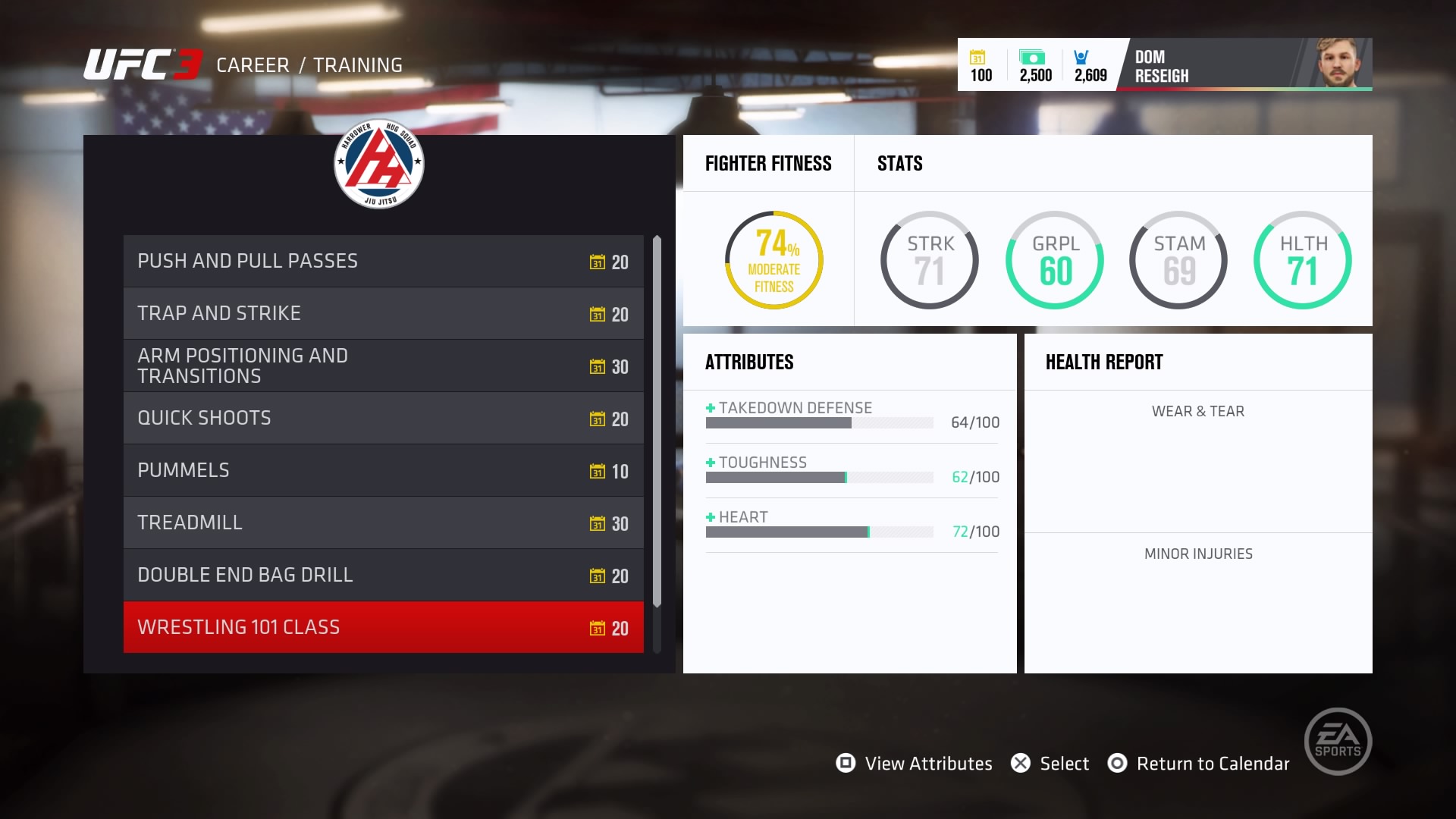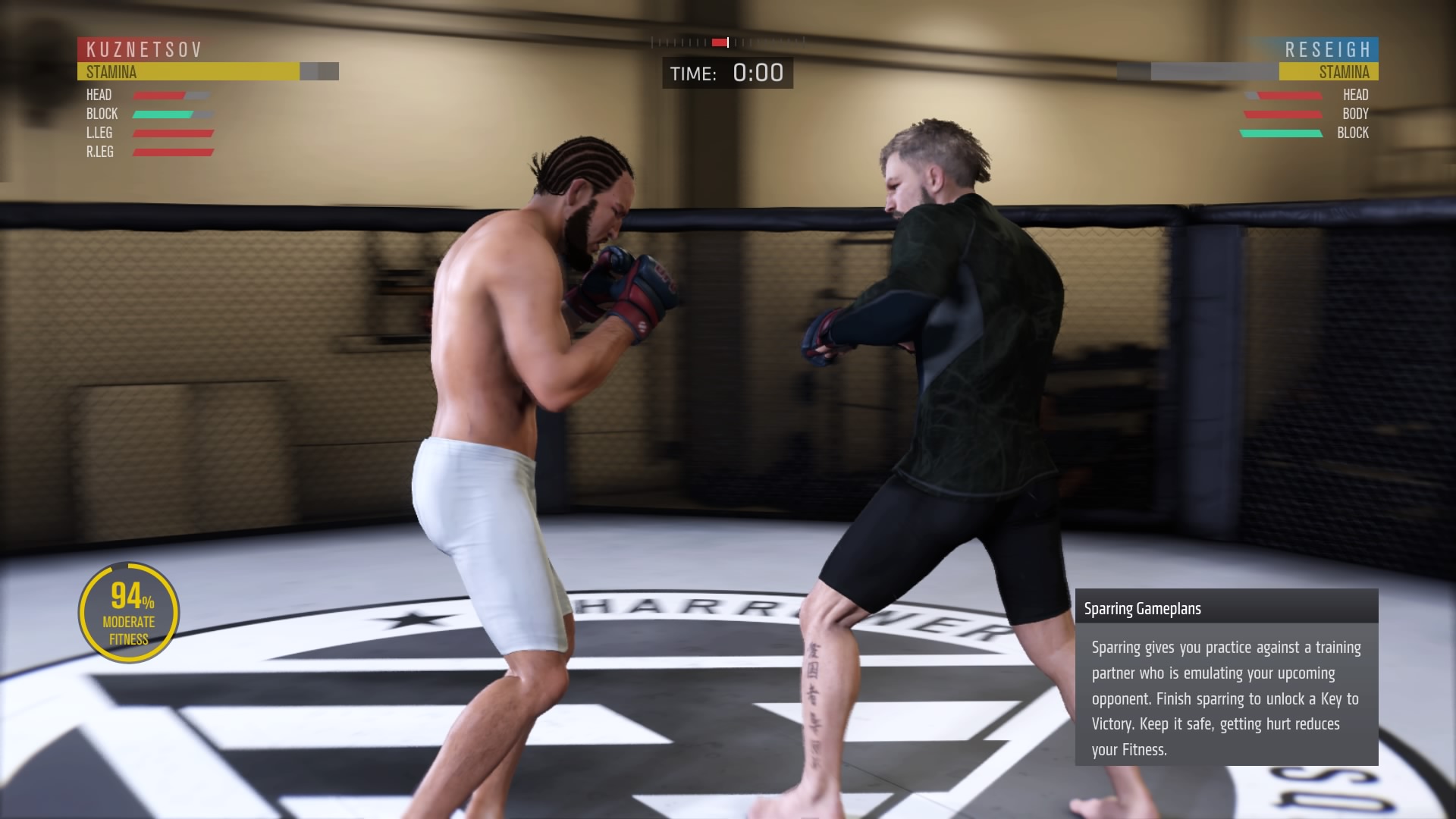UFC 3 tips and tricks guide
Get to grips with the changes

Introduction
Following a two-year-long break, EA Sports’ take on the fastest growing combat sport in the world returns with UFC 3. It’s a fighting game like no other, so even if you’re a dedicated fan of MMA, the intricate strike system and grappling model can be seriously intimidating.
So, to take you from unknown, unranked rookie to the greatest of all time, TechRadar has put together 10 of the tips, tricks and tactics that helped us punch, kick, takedown and grapple our way to championship gold in the Octagon. Even if you’re completely new to the sport, this guide will get you in fighting shape...

Rinse skill challenges first
UFC 3 has a lot of modes, and you might be tempted to leap into GOAT Career mode or UFC Ultimate Team from the off – hold your horses, kiddo! There are a lot of mechanics to master, so you’ll need to grind your timing and your understanding of space, combos and weight distribution before you attempt either mode.
Practice mode can be a good way to round off your edges, but the Skill Challenges are ideal for using the principles of striking, grappling and the ground game in action. Range Striking, Defense Tactics, Submission Defense and Takedown Defense are all perfect places to drill.

Beware of over-training in GOAT career mode
The new Career mode is all about climbing up the MMA career ladder one fight at a time, and each fight comes with a four-week training camp. Depending on where you are in your career, you’ll have access to a gym with cardiovascular workouts, training sessions with real-life fighters (to learn a key tactic for defeating your upcoming opponent) and a sparring session to bring it all together.
Each activity increases your overall fitness, and you’ll need this to be as close to 100% as you can by the time fight week rolls around. Beware of working the same area of the body too much, though, as this can cause lingering injuries that carry over to the fight. Sparring will increase your fitness like nothing else, but it can also dangerously wear you out, so use it wisely.

Always promote your upcoming bout
So the ‘social media’ aspect of UFC 3 is as corny as it sounds. But while it feels a little hollow to use, it still feeds back into some of the GOAT Career mode’s ever-present progressions systems: hype and fan base. The more fans you get talking about your fight, the more hype it’ll build.
The more hype you build, the better opponents you’ll face and the higher on the card you’ll feature. The idea is to start leaping through the rankings and get yourself the championship match of your dreams. Use the Promote option at least once a week, more if you’re over-trained or already in peak physical condition.

Increase your takedown defense
Whether you’re a practiced jiu jitsu savant or a wrestling god made flesh, there’s nothing more frustrating than having your opponent shoot and take you down to the ground on your back. So learning to defend against them should always play a part in your training – especially if your opponent has a higher Grapple stat than you.
Make sure you pick a wrestling or jiu jitsu-focused camp, and use training routines from the Train sub-menu to increase that stat. Quick Shoots and Wrestling 101 Class are perfect for this, so focus on them as well as using Learn with a grapple-focused training partner.

String the right combos
It’s the only area that UFC 3 shares with traditional fighting games. When it comes to fighting from a vertical base, knowing the right combinations of strikes as well as where and when to use them is everything.
Every strike’s potency and deadliness will come down to where your own fighter is standing, which direction he or she is currently facing, and how far you are from your opponent. Each UFC fighter will have a set of boxing, kickboxing or Muay Thai strikes and each one can be strung together. The difference is knowing which ones work best. Using an uppercut after using jabs to close distance is one, or a low kick to the shins followed by a heavy overhand punch.

Use your jab like a dagger
Not as flashy as a haymaker, or dramatically powerful as an uppercut, the humble jab might seem like a move barely worth a second thought, but this isn’t an arcade fighter. Just like real fighting, the jab is fast and can counter almost any strike.
It uses very little stamina, making it an ideal go-to, but it does very little damage so you’ll need to use it effectively to make it count. Thanks to a lightning fast animation it’s ideal for countering slower strikes, as well as sapping your opponent’s stamina while closing distance or as a setup for a more powerful strike in a combo.

Use kicks sparingly or prepare to lose often
As we mentioned in our review of UFC 3, kicks have been heavily tweaked this time around making them a lot more cumbersome, yet just as dangerous if used correctly. Low kicks to the shins are a bread and butter strike, especially if you’re facing a fast and agile opponent. But higher, slower kicks should be used as part of a larger combo or as a surprise strike.
High kicks (hold L1/RB to modify a kick’s height) can shock a wobbly opponent, especially if they’re highly damaged from jabs and uppercuts to the face. Knees are also a powerful target, which are great in the clinch or when defending against a telegraphed shoot.

Position is everything in grappling
Whether you’re pressed against the cage in a clinch or on your back following a successful takedown, being on the defence in MMA can be hell for some. But it’s not the end of a fight. Every takedown or clinch can be escaped, you just need to accept you're going to take a few clean strikes to the head or torso to get there.
If you’re against the cage, hold R2/RT and push the right analog stick in either direction to try and slip out. If this fails and you’re blocked in, shoot for a takedown. If you’re on your back, transition to half-guard as this has a lot more options for getting back to your feet. You’ll likely get blocked once or twice (and hit too) but it’s worth it if grappling is a weak area of your game.

Learn when to block and when to dodge
One of the newest changes UFC 3 brings to the table is the way your head movement is now controlled by the right analog stick. A call back to EA’s boxing roots with the now long-dead Fight Night series, this feature can enable you to pull your head back away from an incoming blow, or duck inside a strike to land one of your own.
It doesn’t replace the ability to block high and low strikes, but knowing when to use one over the other is key. Only use head movement slips when stepping into ‘the pocket’ (when you’re within power punching distance of your opponent), but use blocks to take the edge jabs and heavier attacks.

Use solo challenges to build up your ultimate team
Ultimate Team can be an intimidating play to transition to – the mode's pay-to-win nature will always have the shadow of microtransactions hanging over it – but that doesn’t mean new players are at a distinct disadvantage. This is where Solo Challenges come into play.
Alongside Solo Tournaments, Solo Challenges offer a variety of fight scenarios against real-life UFC fighters and each one offers an increasing number of coins depending on the difficulty (normal, hard or insane) you choose. There’s even a Practice mode, making it a perfect way to grind a particular move and grind in-game currency. You’ll then be able to buy new card packs, unlocking new moves, buffs and loaned fighters.